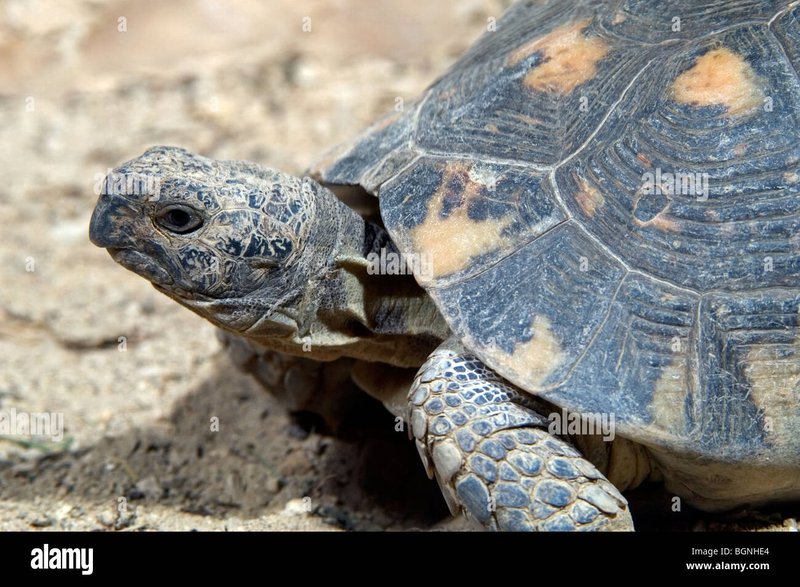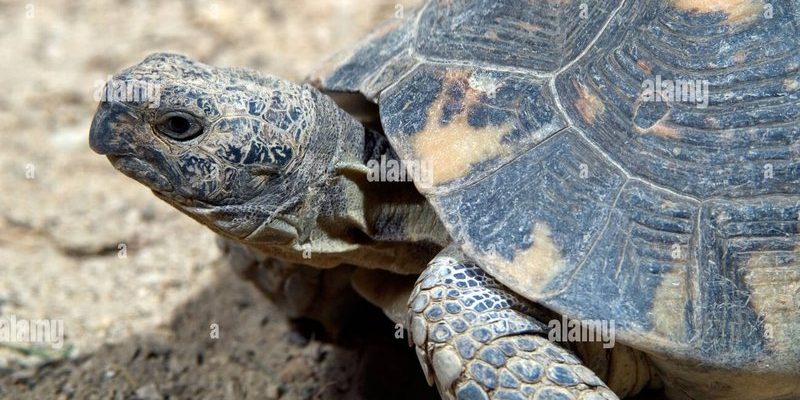
In this guide, we’re going to explore exactly what makes the marginated tortoise special. From their physical traits to their natural habitat, each detail helps paint a clearer picture. Whether you’re a curious pet owner or just someone fascinated by nature, understanding how to identify these remarkable creatures can deepen your appreciation for them. So, grab your favorite drink, sit back, and let’s dive in!
Physical Characteristics of Marginated Tortoises
Identifying a marginated tortoise starts with their physical features. One of the first things you’ll notice is their large, dome-shaped shell, which can reach up to 12 inches in length. This shell is usually brown or olive with a distinctive yellow or golden edge. If you look closely, you’ll see that the scutes, or the individual plates of the shell, are quite prominent. This gives them a more rugged look compared to other tortoise species.
Another standout trait is their long legs. Marginated tortoises boast strong, sturdy limbs that help them traverse their natural habitat, which is often rocky or hilly. These legs are not just for show—they’re adapted for digging and climbing. When you see a tortoise with elongated legs and a robust shell, chances are you might be looking at a marginated tortoise.
Lastly, pay attention to their facial features. They have a slightly pointed snout and a jaw that’s well-suited for their herbivorous diet. The contrasting colors of their skin, often a light gray or brown, can also help you distinguish them from other tortoise species.
Color Patterns and Variations
When it comes to color, marginated tortoises have some unique patterns that make them stand out. Typically, their shells present a beautiful array of browns and yellows, but there’s more to it than that. Each tortoise can have variations in these colors, with some showcasing darker or lighter tones based on their environment.
You might be wondering how these patterns help in identifying them. The bold yellow margins around their plastron—the underside of the shell—are a key identifier. This feature is often absent in other tortoise species. So, if you spot a tortoise with striking yellow edges on its shell, it’s a pretty good bet that you’ve come across a marginated tortoise.
In nature, these color variations can serve a purpose too. Their coloration helps them blend into their surroundings, protecting them from predators. So not only are you looking at a beautiful creature, but also one that’s adapted perfectly to its environment.
Where They Live: Habitat and Distribution
Marginated tortoises are primarily native to the Mediterranean region, particularly in countries like Greece and the surrounding islands. Understanding where they live can significantly aid in identification. If you find a tortoise basking in the sun in a Mediterranean garden, there’s a strong chance it’s a marginated tortoise.
Their habitats usually consist of rocky hillsides and coastal areas where the vegetation is a mix of grasses and low shrubs. They thrive in warm climates and are often found in sunny spots where they can soak up the heat. If you’re anywhere near these locales, take a moment to look around—you might just spot one!
Interestingly, these tortoises also have a unique behavior when it comes to shelter. They often dig burrows or hide beneath bushes to escape the heat or avoid predators. If you see a tortoise retreating into the ground or hiding among plants, it’s likely adapting to its environment—a sign of a healthy marginated tortoise!
Behavioral Traits: Their Lifestyle and Diet
Marginated tortoises are known for their herbivorous diet. They primarily feed on a variety of grasses, flowers, and leafy greens. This diet is vital for their growth and health, as it provides them with the necessary nutrients. If you have the chance to observe one in the wild or as a pet, you’ll often see them munching away on dandelions or clover—a favorite treat!
Their behavior can also reveal a lot about their identity. Unlike some tortoise species, marginated tortoises tend to be a bit more active during the day (diurnal). They enjoy roaming around, basking in the sun, and occasionally digging in the dirt. If you spot a tortoise that seems particularly curious and energetic, that’s another clue pointing toward the marginated species!
You might also notice how they interact with their environment. Marginated tortoises are known to exhibit social behavior, especially during the mating season. Males can often be heard making a spectacle as they try to attract females. This behavior is a fascinating aspect of their lives and an exciting indicator of their species identity.
Identifying Marginated Tortoises in Captivity
For those interested in keeping a marginated tortoise as a pet, knowing how to identify them in captivity is crucial. Generally, pets will show the same physical traits as their wild counterparts, but there can be variations due to breeding. Captive-bred marginated tortoises may have slightly different shell shapes or colors, but the yellow margins and domed shells should remain consistent.
When purchasing or adopting a marginated tortoise, check with reputable breeders or sanctuaries. They can provide you with vital information about the tortoise’s lineage and health. It’s also essential to ensure that the tortoise was raised ethically and humanely. You want to bring home a healthy pet that fits your lifestyle.
In addition, monitor any changes in behavior or appearance. A healthy tortoise will be active, have a clear and bright eye, and a smooth shell. If you notice any signs of lethargy or unusual behavior, it might be time to consult a veterinarian familiar with reptiles.
Conservation Status and What It Means
Marginated tortoises are currently listed as near threatened due to habitat loss and the illegal pet trade. Recognizing them is essential, especially when it comes to conservation efforts. By understanding their physical traits and behaviors, you can better advocate for their preservation.
Being aware of their status is also a call to action. Supporting conservation organizations and responsible breeding practices can significantly impact their survival. If you’re passionate about tortoises, consider volunteering or donating to programs that protect their habitats or educate the public about the importance of this species.
It’s crucial to remember that while marginated tortoises make great pets, they also play a vital role in their ecosystem. By making informed choices, you not only contribute to their preservation but also help maintain the delicate balance of their natural habitat.
Identifying a marginated tortoise may seem daunting at first, but with a keen eye for their unique features and understanding their natural behavior, it becomes much easier. Whether you’re spotting one in the wild or considering one as a pet, knowing these details can deepen your appreciation for these remarkable reptiles.
So next time you find yourself surrounded by nature, take a moment to look a little closer. You never know, you might just spot a marginated tortoise basking in the sun or munching on some delicious greens. Enjoy the journey of discovering these fascinating creatures and remember, every little detail counts when it comes to understanding and appreciating our world.

